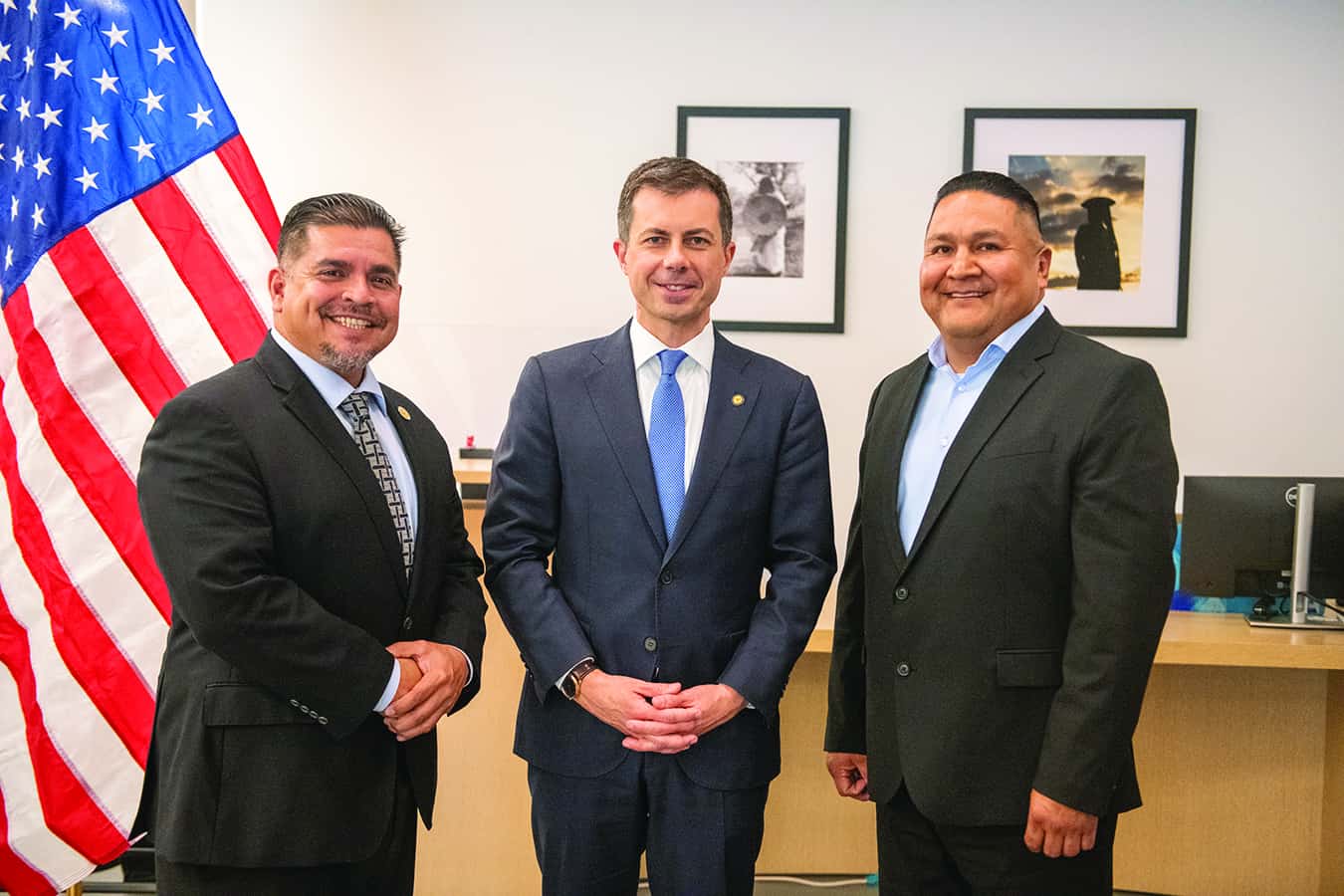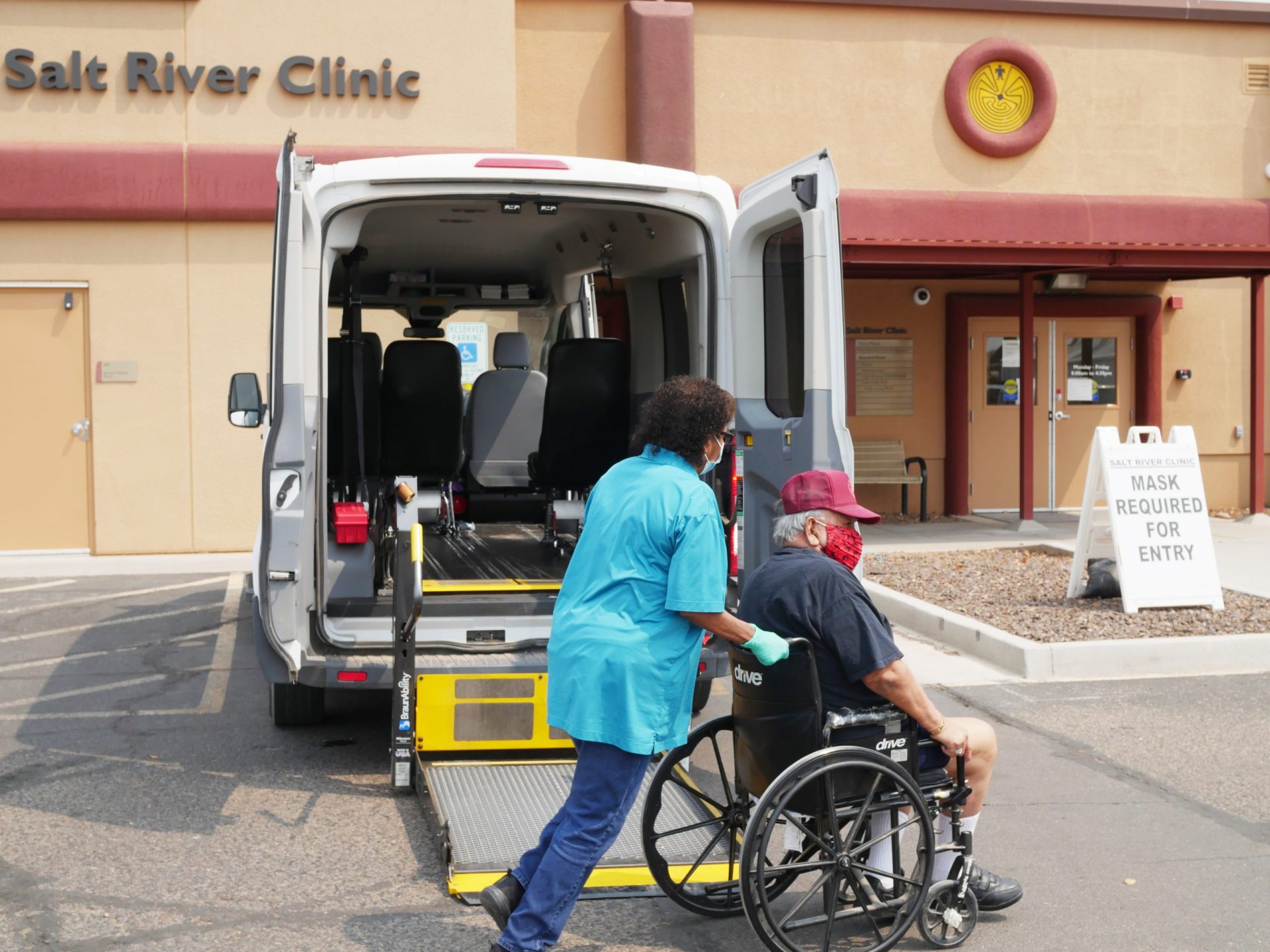VIEWS: 2122
April 1, 2024Transportation Secretary Buttigieg Meets with Leadership from Four Sibling Tribes at GRIC
Leadership from the Four O’odham Sibling Tribes convened at the Gila River Indian Community’s (GRIC) Huhugam Heritage Center on March 5 for a roundtable discussion with U.S. Department of Transportation (USDOT) Secretary Pete Buttigieg about transportation infrastructure projects and needs within their tribal communities.
This was Secretary Buttigieg’s second stop at the GRIC. The first was in 2021, when GRIC Governor Stephen Roe Lewis emphasized to Buttigieg the importance of federal funding for infrastructure improvement on the stretch of Interstate 10 that runs through the Community.
On January 25, Secretary Buttigieg let the GRIC know that the Community would be receiving a $95 million grant that had been submitted to the USDOT by the GRIC and Arizona Department of Transportation (ADOT).
Buttigieg’s visit to the GRIC after the announcement of the grant conveyed his commitment to tribes and the importance of meeting their needs. His visit was met with a warm introduction from tribal leaders at the top of the stairs of the center’s courtyard, where the leaders were welcomed with a cultural performance by Keli Akimel Hua Modk Cudkdam (Gila River Basket Dancers).
After the performance, Governor Lewis and GRIC Lt. Governor Regina Antone took Secretary Buttigieg on a tour of the center and all of the traditional and cultural items on display before heading to the roundtable.
At the roundtable discussion, Governor Lewis remarked that it is a tremendous opportunity for tribes to have a Cabinet secretary visit their communities, and that Secretary Buttigieg in particular has been an advocate for tribal access to critical transportation funds.
“In the past few years of working together with you, I’ve been impressed by your philosophy of true partnership for tribal government and sovereignty,” Governor Lewis said to Secretary Buttigieg.
“During your time as secretary, you’ve acknowledged that prior federal and state policies often excluded or disregarded tribal lands and lacked tribal input. Under your leadership, that’s changing.”
Secretary Buttigieg said that he was especially grateful that the Sibling Tribes were invited, so that he could get a sense of what is affecting the communities. He also recognized the resiliency of the GRIC in coming back and trying again after their first attempt at obtaining the grant funding was unsuccessful.
“So many of our best stories have to do with transportation projects that were brought forward, didn’t get the answer they were hoping for the first time, came back, revised the approach, strengthened the case and then came back victorious,” said Buttigieg. “And that is true for this I-10 project, and it reflects a readiness to work with our team, a determination to work with each other and of course the merits of the project itself, which is part of why we’re so pleased to be able to support it.”




Present at the roundtable for the Salt River Pima-Maricopa Indian Community were Council members Michael Dallas and Jacob Butler.
“The SRPMIC has more than 650,000 vehicles traveling on the highways and roadways through our Community every day. While our connectivity with the [surrounding] jurisdictions encourages economic development, it also creates unique negative impacts,” Dallas told Secretary Buttigieg.
“With a significant number of vehicles [using] the Community’s surface roads as an alternate to regional arteries as cut-through traffic, [the] wear and tear on our roads creates potential risk for injuries. As you can imagine, this puts a tremendous strain on the SRPMIC’s public safety and public works agencies that are responsible for maintaining and keeping roadways safe for travel.”
When asked what the USDOT can do to help offset the cost of transportation infrastructure projects within tribal communities that often see heavy traffic from commuters from other communities in the fast-growing Phoenix metropolitan area, Buttigieg told O’odham Action News said that it’s a topic that he hopes to take back with him to Washington after talking with tribal leadership.
“Sometimes [outside traffic] can happen during a disruption or closure, and then a lot of traffic is pushed through Indian Country. Sometimes it happens routinely, and many of the people who benefit from the roads are not necessarily the same people who are funding the creation of the roads,” said Buttigieg.
“I heard what the Ak-Chin Indian Community was saying about their complicated challenges with [the City of] Maricopa, for example. Often just by setting the table and making sure those conversations happen, we can help create a better path forward.”
Watch the full video of Secretary Buttigieg’s visit:







